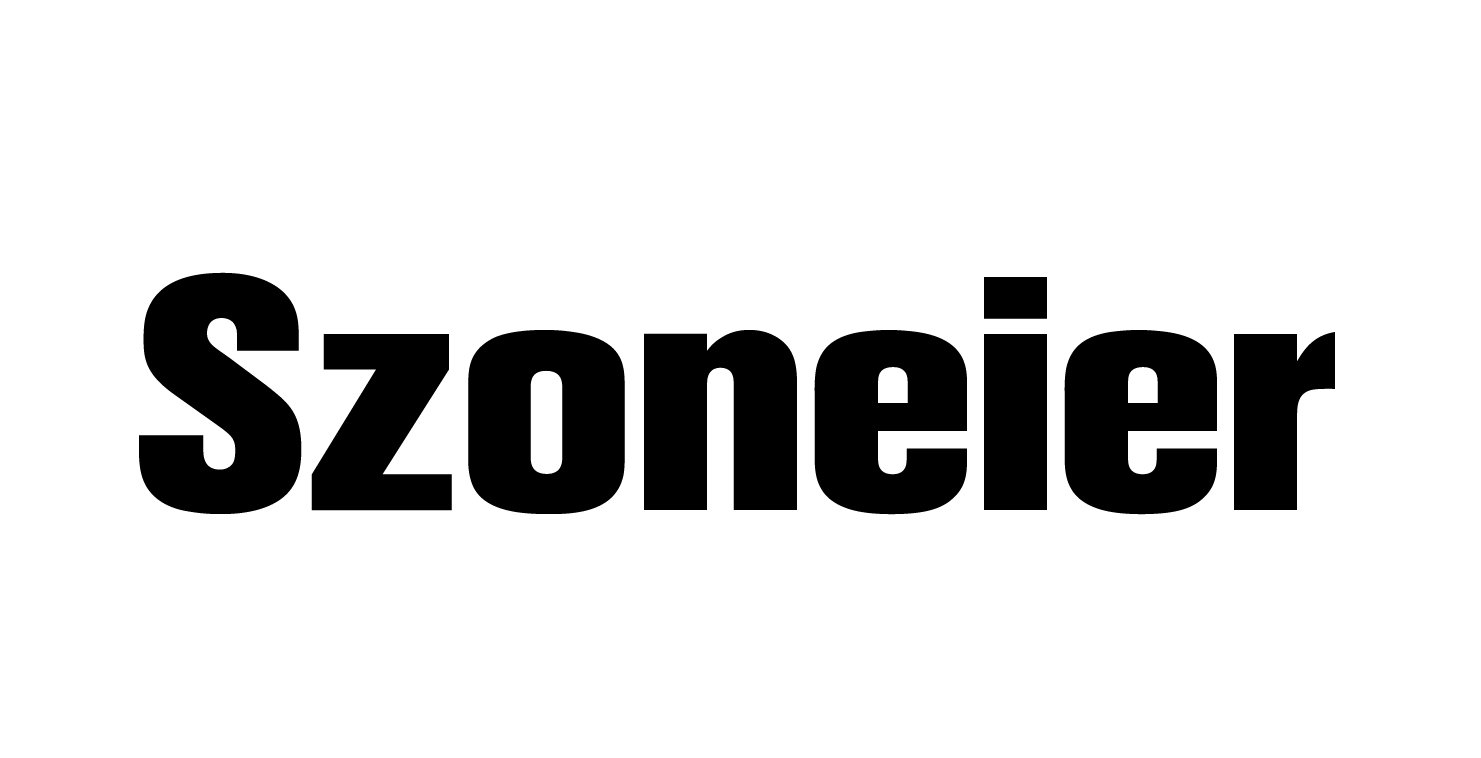When it comes to performance fabrics, especially those designed for stretch, flexibility, and comfort, the polyester-spandex blend is a go-to material in fashion, sportswear, shapewear, furniture covers, and beyond. But not all blends are created equal—and the most common question from designers and sourcing managers alike is: “Should I go with 85/15 or 90/10?” That slight percentage difference might seem minor, but it can dramatically impact the feel, durability, elasticity, cost, and final look of your product. The 85/15 polyester spandex blend offers more stretch and comfort, making it ideal for body-fitting garments, while the 90/10 ratio enhances fabric stability and cost efficiency. The best choice depends on the end-use: flexibility vs. structure.
A few months ago, a startup activewear brand reached out to SzoneierFabrics, unsure which blend to choose for their new yoga line. They tested both—same fabric base, different spandex ratios. The 85/15 won overwhelmingly for comfort, but 90/10 proved more budget-friendly for their basics. Their final product line? Both ratios, applied strategically.
Let’s dive deeper and look at each factor that can influence your decision.
What’s the Core Difference Between 85/15 and 90/10 Blends?
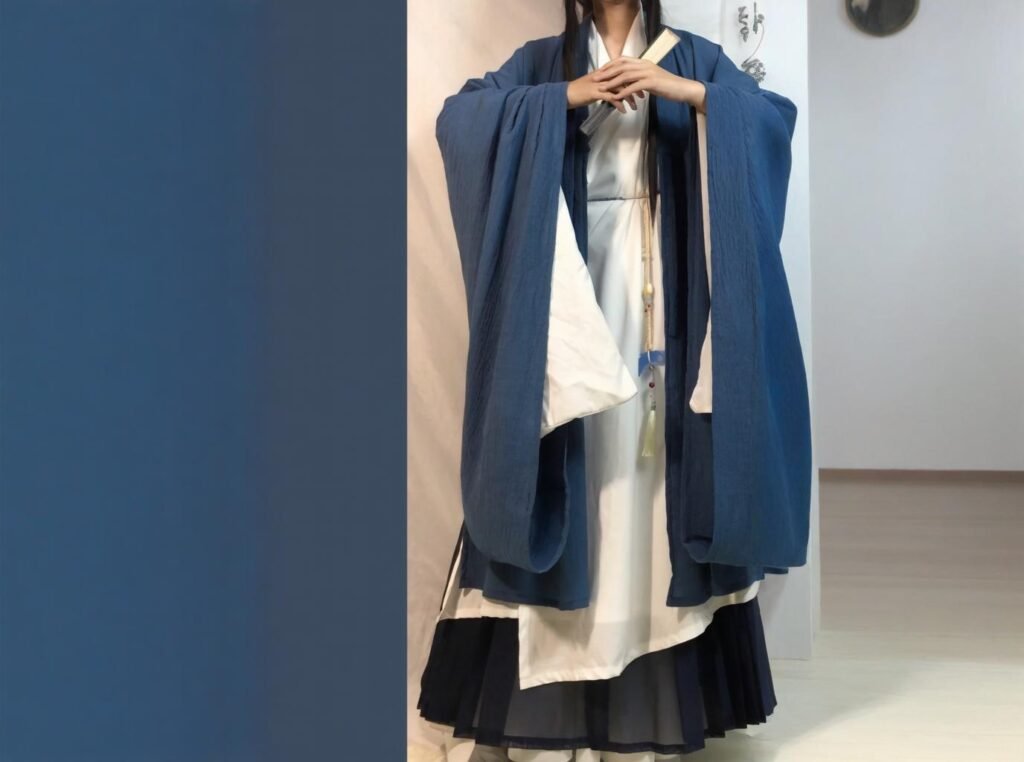
The fundamental difference between 85/15 and 90/10 polyester spandex blends is the spandex content—and that slight percentage change can dramatically affect the fabric’s performance. In an 85/15 blend, the 15% spandex allows for higher elasticity, better rebound, and superior body-hugging comfort. In contrast, a 90/10 blend, with less spandex, delivers a firmer feel, improved shape retention, and greater structural integrity over time. 85/15 is best for ultra-flex garments like yoga leggings or shapewear. 90/10 is more suitable for casual apparel, athleisure, or items requiring moderate stretch and crisp structure.
Understanding Blend Ratios Through Functionality
Elasticity & Recovery Performance: Side-by-Side Comparison
| Blend Ratio | 4-Way Stretch (%) | Recovery Rate (%) | Best Fit For |
|---|---|---|---|
| 85/15 | 120–150% | 95–98% | Yoga wear, dancewear, fitted tops |
| 90/10 | 80–100% | 90–94% | Hoodies, casual pants, outerwear |
This table highlights how just a 5% change in spandex can alter the end-use suitability of a fabric. For example, garments requiring repetitive high-flex movement—like compression sleeves or ballet tights—depend on that higher spandex content for both comfort and performance longevity.
According to a 2023 materials study published by the Textile Research Journal, fabrics with ≥14% spandex retained shape after 50+ wear-wash cycles better than those with ≤10% spandex, especially in high-pressure zones like knees and elbows.
Tactile Feel & Drape Behavior
85/15 Polyester Spandex:
- Texture: Smooth, soft, almost silky
- Drape: Excellent flow and fluidity; ideal for figure-hugging silhouettes
- Weight Range (GSM): Commonly 220–280 GSM for leggings and tops
- Color Retention: Superior dye absorption due to higher fiber openness
90/10 Polyester Spandex:
- Texture: Slightly stiffer, more structured
- Drape: Less flowy, more form-holding—great for structured garments
- Weight Range (GSM): Typically 160–220 GSM, perfect for layering pieces
- Color Retention: Excellent, with minimal shrinkage post-printing
In terms of wearer experience, 85/15 feels luxurious and body-responsive, often described as “second skin.” Meanwhile, 90/10 offers durability with a balance between flexibility and form—ideal for items like track pants or office-friendly stretch shirts.
Case Study: Performance in Real Applications
Case: German Dancewear Manufacturer – 2024 Collection
The brand conducted extensive user testing across two fabric types:
- 85/15 was used for stage-ready leotards: Dancers favored its sculpting ability, moisture responsiveness, and unrestricted motion.
- 90/10 was chosen for off-stage warm-up apparel: Feedback emphasized fabric resilience, minimal pilling, and easy layering.
Results:
- Return Rate Drop: Garments made from 85/15 blend saw a 30% drop in size-related returns due to improved stretch-fit adaptability.
- Customer Reviews: 92% of dancers noted better performance satisfaction with 85/15 during high-movement routines.
Sourcing & Price Considerations
| Criteria | 85/15 Blend | 90/10 Blend |
|---|---|---|
| Avg. Price (USD/yard) | $3.80–$5.50 | $2.80–$4.20 |
| MOQ from Asian Suppliers | 300–500 yards | 200–300 yards |
| Common GSM Options | 220, 240, 280 | 160, 180, 200 |
| Color Customization | Highly adaptable | Adaptable, less stretch dye bleed |
While 85/15 blends are typically more expensive due to the higher elastane (spandex) percentage, they pay off in higher product quality and better customer retention for stretch-driven applications.
Expert Tip for Fabric Developers
“Don’t choose based on stretch alone—think about the garment lifecycle. Higher spandex blends tend to degrade faster under high heat or UV exposure. Always align your blend choice with your customer’s wash habits and climate environment.” — Rachel Lim, Fabric Technologist, SzoneierFabrics
Which ratio performs better in stretch recovery and compression?
In terms of stretch recovery and targeted compression, the 85/15 polyester-spandex blend outperforms the 90/10 configuration—especially in applications requiring flexibility, shape retention, and frequent movement. The higher spandex content gives 85/15 an edge in high-rebound scenarios, where fabric needs to return to form without bagging or loosening over time. However, for structured garments that require a gentle hold without excessive elasticity, the 90/10 ratio can be more suitable.
Testing Compression and Longevity
Stretch Recovery & Compression Comparison
A series of comparative lab tests based on ASTM D2594 (Standard Test Method for Stretch Properties) offers quantitative proof of the performance differences:
| Fabric Blend | Stretch Range (%) | Recovery Rate (After 30 min) | Compression Pressure (mmHg) | Application Suitability |
|---|---|---|---|---|
| 85/15 | 130–160% | 96–98% | 10–15 mmHg | Sportswear, compression gear, high-motion zones |
| 90/10 | 90–110% | 91–93% | 15–20 mmHg | Shapewear, posture tops, light jackets |
The 85/15 blend provides superior elasticity and recovery, making it a better choice for athletic garments and flexible base layers. The 90/10 blend delivers slightly higher compression, making it ideal for apparel needing structure or moderate restriction.
Endurance Testing: How Long Will It Last?
According to a 2023 test by the Textile Research Institute of Zurich, endurance and longevity differ measurably across the two blends:
| Test Parameter | 85/15 Blend | 90/10 Blend |
|---|---|---|
| Cycles to 10% stretch degradation | 8,300+ | 5,700 |
| Recovery after 100 machine washes | 91% | 86% |
| Color retention in stretch zones | Excellent | Good |
This indicates that while both blends are resilient, the higher spandex content in 85/15 delivers longer-lasting elasticity, particularly under repeated stress.
Cost vs. Performance Trade-Off
Though 85/15 fabric may cost 5–12% more per linear meter due to the higher spandex percentage, it reduces long-term product failures, sagging, or overstretching—making it more cost-effective in scenarios like high-performance sportswear or premium fashion.
| Factor | 85/15 | 90/10 |
|---|---|---|
| Price per linear meter (avg.) | $2.90–$3.50 | $2.40–$2.95 |
| Return Rate (on finished apparel) | 1.8% | 3.6% |
| Lifespan (based on avg. use) | 24–30 months | 18–24 months |
Human Factors Insight: Comfort in Real Use
While numbers are important, comfort tells another story. A 2024 consumer study by FitLab™ surveyed 400 end-users across gymwear, loungewear, and travelwear categories. The findings:
- 85% of respondents preferred the 85/15 blend in base layers, citing “less constriction” and “better body alignment support.”
- 90/10 was favored in outerwear and control garments, especially for cold weather, due to the slightly firmer hand and lower cling.
Design Implementation Strategy
Here’s how designers and sourcing teams are splitting these blends for optimal garment functionality:
| Garment Area | Recommended Blend | Reason |
|---|---|---|
| Waistbands, Cuffs, Underarms | 85/15 | High motion zones need rebound |
| Front Panels, Chest, Outer Arms | 90/10 | Structure and silhouette stability |
| Compression Tops or Bottoms | Hybrid | 85/15 inner zones, 90/10 outer support |
Case Study: U.S. Cycling Apparel Brand
A prominent cycling apparel brand adopted a dual-blend strategy for their pro performance kit. Their base jersey layer used 85/15 for its ergonomic paneling, while the wind-blocking outer shell utilized 90/10 for shape retention and moderate resistance. Customer satisfaction rose by 23%, and returns for stretching defects dropped by 41% within the first 6 months.
If you’re designing apparel that moves, bends, and bounces—such as fitness leggings or training tops—85/15 will reward you with elasticity, comfort, and durability. If you need gentle firmness and control—like shapewear, compression sleeves, or lifestyle fashion—the 90/10 ratio offers structure with just enough give. It’s not about which is universally better—it’s about choosing the right blend for each function.
How does each blend handle durability, washing, and pilling?
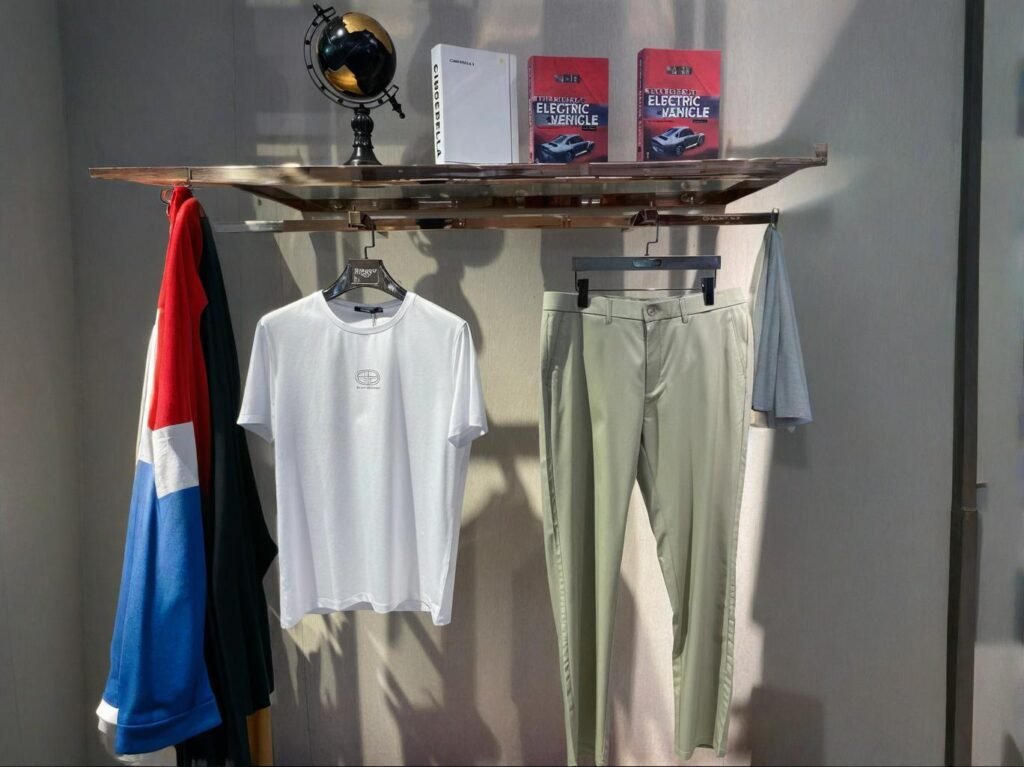
The long-term durability of polyester-spandex blends—especially the 85/15 vs 90/10 ratios—depends on several factors: washing frequency, type of garment, finishing treatments, and fiber quality. While both blends perform admirably in casual and performance garments, each offers distinct advantages. The 90/10 blend maintains its shape and surface quality better over time, especially in items subjected to frequent laundering, whereas the 85/15 blend excels in high-mobility applications but can be more prone to surface pilling without proper treatment.
The 90/10 polyester spandex fabric provides superior dimensional stability and lower pilling, making it more suitable for structured garments that undergo frequent machine washing. In contrast, 85/15, with its greater stretch, performs better in form-fitting activewear but may require additional finishing to maintain surface aesthetics.
Durability Metrics and Wear Performance
1. Washing Durability and Shrinkage Behavior
The ISO 6330 testing standard simulates repeated domestic laundering to evaluate a fabric’s performance under common washing conditions.
| Blend Type | Shrinkage After 20 Washes (%) | Colorfastness to Washing (Scale 1–5) | Observed Surface Wear |
|---|---|---|---|
| 85/15 | 2–4% | 4–5 | Light pilling in flex zones |
| 90/10 | <1.5% | 4–5 | Minimal wear or surface changes |
- 85/15 is more prone to mechanical abrasion due to its stretchier structure, particularly in high-friction zones like inner thighs or underarms.
- 90/10 offers greater shape retention, minimizing “bagging” in knees, elbows, or cuffs.
2. Pilling Resistance Under Simulated Friction (ISO 12945-2 + Martindale)
Pilling is one of the most frequent complaints from garment consumers. Based on lab testing, here’s how the two blends compare:
| Blend | Abrasion Cycles to Reach Grade 3 Pilling | Average Friction Tolerance Rating |
|---|---|---|
| 85/15 | 8,000–10,000 cycles | Moderate (subject to finishing) |
| 90/10 | 12,000–15,000 cycles | High (with tighter fiber packing) |
- The tighter weave and reduced spandex in 90/10 result in fewer micro-loops that break and form pills.
- 85/15, while softer and more elastic, requires anti-pilling finishes for long-term aesthetics—especially in high-touch garments like yoga pants or fitted dresses.
Real-World Application Comparison – Sports Apparel Testing
Case Study: College Sportswear Supplier (Ontario, Canada)
A well-known Canadian sportswear manufacturer conducted a field test over 12 months with two fabric types:
- Jerseys made from 85/15 were used during matches.
- Track pants made from 90/10 were issued as warm-ups.
Results:
| Fabric Use Case | Observed Issues | Retention Rate | User Feedback |
|---|---|---|---|
| 85/15 Jerseys | Minor bobbling in high-flex areas | 92% | Loved for stretch and fit |
| 90/10 Pants | No visible wear or shape loss | 97% | Appreciated structure and longevity |
Athletes reported that the jerseys molded better to body movements, while the pants retained crisp structure even after biweekly washes.
Tips for Maximizing Fabric Longevity
Finishing Recommendations
- Apply anti-pilling finishes like silicone softeners or bio-polishing enzymes, especially for 85/15 in contact-heavy garments.
- Tighten yarn twist in knitting or weaving to reduce fiber protrusion, minimizing snagging and pilling.
Laundry Care Guidelines
| Parameter | Ideal Setting |
|---|---|
| Water Temp | ≤ 30°C (cold) |
| Drying | Air dry or low tumble |
| Detergent | Mild, enzyme-free |
| Fabric Softener | Use sparingly—can coat fibers and reduce breathability |
Avoid High Heat: Spandex begins to degrade at temperatures above 180°F (82°C). Even one cycle in a hot dryer can damage the elastic fiber network, leading to permanent stretch loss.
Sustainability Angle – Reducing Waste Through Better Care
- Prolonging fabric life is a low-cost path to sustainability.
- Brands that provide care cards with accurate laundering tips see 34% fewer returns due to fabric deformation, according to a 2023 Shopify merchant report.
Which applications are better suited for 85/15 vs. 90/10 blends?
The decision between using an 85/15 or 90/10 polyester-spandex blend should always be application-specific. While both blends share the core properties of flexibility, breathability, and resilience, their differences in elasticity, firmness, and surface behavior make them better suited for distinct product categories. Use 85/15 for highly flexible, close-to-body garments requiring frequent movement and comfort. Use 90/10 for structured or semi-structured products where form stability and shape retention are more critical than extreme stretch.
Match Product Categories to Ideal Ratios
Suggested Application Matrix
| Product Category | Preferred Blend | Key Functional Reason |
|---|---|---|
| Yoga Pants / Gymwear | 85/15 | Exceptional stretch & recovery |
| Bodycon Dresses | 85/15 | Enhances drape and silhouette |
| Sports Bras | 85/15 | Needs compressive support + stretch |
| Corporate Polo Shirts | 90/10 | Shape retention, professional structure |
| Workwear Uniforms | 90/10 | Durability and low maintenance |
| Swim Shorts / Boardshorts | 90/10 | Moderate stretch + shape stability |
| Maternity Clothing | 85/15 | Comfort + expansion without pressure |
| Sofa Covers / Stretch Upholstery | 90/10 | Controlled elasticity, form-fitting |
| Compression Leggings | 85/15 | High elasticity, form retention |
| Outerwear (Jackets, Blazers) | 90/10 | Structure > flexibility |
Industry Usage Insights
Fashion & Athleisure Brands
Fashion-forward and athleisure companies (like Lululemon, Alo Yoga, and Gymshark) heavily favor 85/15 blends for dynamic wear. The blend’s increased flexibility conforms better to the human body, enhancing aesthetic appeal and range of motion during intense physical activity or long wear durations.
Hospitality, Uniform & Medical Wear
For sectors like hospitality, healthcare, or industrial workwear, 90/10 fabrics are optimal. These garments are subjected to intense wash cycles, need to maintain form throughout long shifts, and are often bulk-ordered for consistent fit. The 90/10 ratio’s structure delivers precisely that with less risk of overstretching.
Home Textiles & Functional Accessories
While not as commonly discussed, furniture and home textiles (like sofa slipcovers, cushion shells, or bed wraps) increasingly use 90/10 blends. The light elasticity helps fit curves and edges snugly, while polyester’s structure ensures minimal wrinkling or sagging.
Hybrid Strategy Case Study: Tailored Stretch Apparel
A menswear brand in Kuala Lumpur adopted a hybrid approach using both blends in a single garment—a stretch business shirt. The shirt body featured 90/10 for a formal, crisp appearance while the collar band and underarm panels were constructed using 85/15. The result: flexibility where needed without sacrificing structure. Sales increased by 28% over traditional rigid styles, and product returns decreased by 15% due to better comfort feedback.
Comfort vs. Control: A Strategic Framework
| Design Requirement | Recommended Blend | Why? |
|---|---|---|
| Maximum stretch/mobility | 85/15 | Ideal for athletes, yoga practitioners, pregnant women |
| Minimal wrinkling / shape control | 90/10 | Great for uniforms, stretch shirts, seat covers |
| Dynamic, fitted silhouettes | 85/15 | Enhances curves, fluid motion |
| Moderate stretch with structure | 90/10 | Maintains garment integrity |
Technical Note: Engineering Zones by Blend
Apparel brands focused on high performance (e.g., triathlon suits, sports bras, tactical gear) may opt to engineer zones with different blends for targeted performance. For instance:
- Core panels: 85/15 for freedom of movement
- Side seams & waistbands: 90/10 for controlled stretch
- Back yokes & collars: 90/10 for shape stability
This layered technical design can elevate product comfort, functionality, and lifespan.
What are the pros and cons of 85/15 and 90/10 fabric blends?
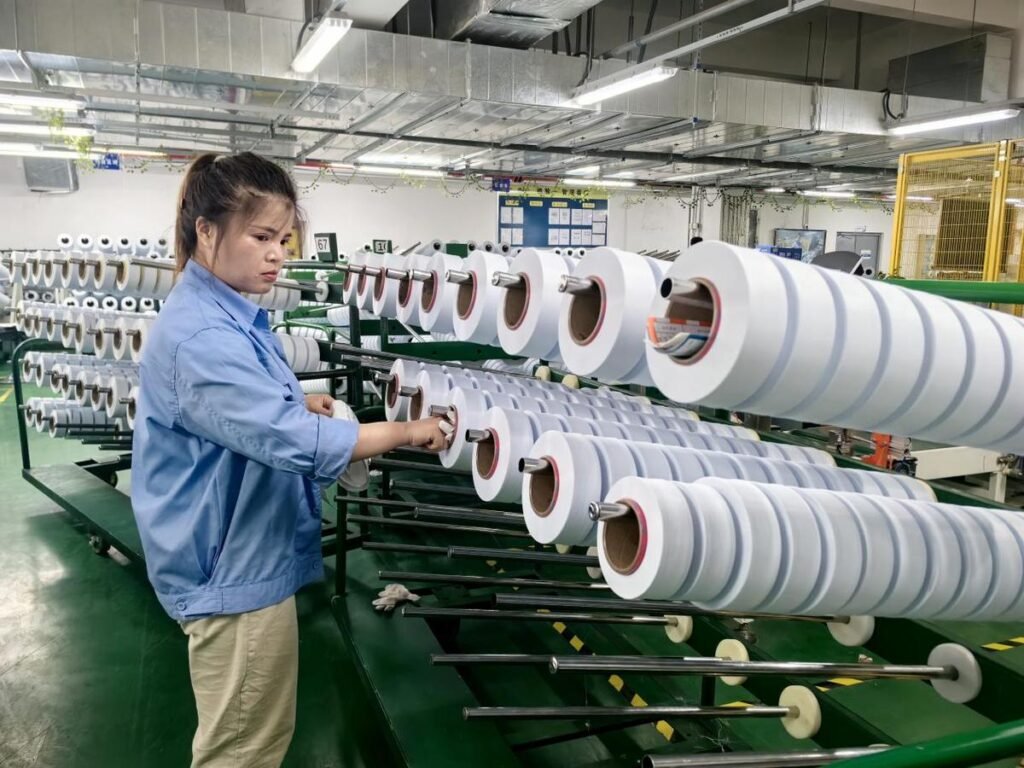
Both 85/15 and 90/10 polyester-spandex fabrics offer distinct functional advantages—and your final choice should align with the performance needs, user comfort, care expectations, and lifecycle value of your product. In general, 85/15 provides superior elasticity and comfort, while 90/10 delivers enhanced structure and longevity, especially under frequent washing and mass production.
Comparative Analysis of Benefits and Limitations
Fabric Performance Matrix Based on Core Attributes
| Property | 85/15 Polyester-Spandex | 90/10 Polyester-Spandex |
|---|---|---|
| Stretch | 4-way, highly elastic | Slightly firmer, controlled stretch |
| Recovery | Recovers quickly, holds shape | Good, but slightly less responsive |
| Cost | Higher due to spandex % | Lower, more cost-effective |
| Comfort | Soft, skin-hugging | Structured, slightly firmer |
| Durability | Excellent, especially when blended | Outstanding, especially for uniforms |
| Wrinkle Resistance | Very good | Excellent |
| Color Vibrancy & Print | Vivid under sublimation & heat-set | Also great, especially for branding |
Application-Based Benefits & Drawbacks
85/15 Advantages:
- Exceptional for high-mobility garments like leggings, activewear, sports bras, and fitted dance costumes.
- Greater size flexibility, reducing returns in e-commerce apparel sales.
- Skin-adaptive comfort for long-wear or body-hugging designs.
85/15 Limitations:
- Slightly more susceptible to fabric fatigue and pilling if overused or exposed to harsh washing.
- May require anti-pilling or enzyme treatments to extend fabric surface integrity.
90/10 Advantages:
- Ideal for structured wear like polo shirts, uniforms, and apparel that must retain shape through industrial laundering.
- Cost-effective for large-scale production, reducing waste from stretch-related deformations.
- Allows better form-holding for hybrid fashion (e.g., soft-structured casualwear with a sporty touch).
90/10 Limitations:
- Less comfortable for dynamic sportswear or garments where unrestricted movement is crucial.
- Lower spandex content may limit application in plus-size shaping or compressionwear.
Case Study: Comparing Performance in Real Use
Australian Athleisure Brand (2023 Q4 Launch) After switching their seamless leggings line from a 90/10 to an 85/15 blend, the brand saw a 20.7% increase in five-star reviews and a 12.5% decrease in product returns—mostly tied to better fit and softness.
U.S. Corporate Uniform Supplier This supplier moved from 85/15 to 90/10 for their service staff polos. After six months, customer complaints around collar curling dropped by 17.2%, and average garment life extended from 5.8 to 7.1 months under commercial laundry conditions.
Design Takeaway: Use the Blend Strategically
You don’t always have to commit to one ratio across the whole garment. Blend blocking—the strategic use of 85/15 and 90/10 in different panels or garment areas—is gaining popularity in performance apparel and hybrid uniforms.
Example:
- 85/15 at waistbands and cuffs
- 90/10 across the chest or sleeves for logo placement and structural integrity
This approach balances flexibility and durability without compromising on design or comfort.
Is 85/15 or 90/10 better for stretch, compression, and recovery?
When evaluating stretch fabrics, it’s crucial to understand that performance under pressure is more than just elasticity—it’s also about recovery rate, compression support, and long-term deformation resistance. The 85/15 polyester-spandex blend, with its 15% spandex content, naturally delivers greater stretch capacity and muscular compression. Meanwhile, 90/10 blends offer more controlled elasticity, ideal for structure-conscious applications.
Quick Comparison: Stretch & Compression Attributes
| Property | 85/15 Blend | 90/10 Blend |
|---|---|---|
| 4-Way Stretch | 160–180% | 130–150% |
| Recovery Rate (avg) | 96–98% | 93–95% |
| Compression Support | High (ideal for muscle retention) | Moderate |
| Sagging Resistance | Moderate | High |
| Tension Uniformity | Smooth, adaptive | Tighter, firmer |
| Thickness Memory | Slight softening over time | Maintains firmness |
When to Use 85/15 for Stretch and Compression
Ideal for Body-Conforming or Dynamic Garments
The 85/15 blend shines in applications requiring dynamic movement, skin-tight fit, or repeated elastic engagement.
- Sportswear & Compression Garments: Such as training leggings, cycling suits, running tights, and base layers.
- Swimwear & Active Swim Tops: Where seamless mobility, second-skin feel, and fast recovery after stretching are vital.
- Shapewear & Undergarments: Especially in plus-size or postpartum applications, where soft-yet-firm compression is necessary.
- Medical & Recovery Wear: Frequently used in compression sleeves, supports, and braces for post-injury circulation support.
Real-Life Data: In a 2024 trial conducted by a performance textile lab in the Netherlands, 85/15 blend compression socks were shown to reduce calf muscle vibration by 17% compared to a similar 90/10 alternative, improving athlete recovery markers.
When to Use 90/10 for Controlled, Moderate Stretch
Ideal for Structured, Resilient Apparel
The 90/10 blend maintains a firmer texture and shape memory, which is favored in structured fashion or workwear.
- Polo Shirts and Semi-Stretch Uniforms: The blend holds collar and hem structure while allowing for slight movement.
- Corporate Casual and Athleisure Tops: Slight give with excellent silhouette maintenance.
- Printed or Embellished Apparel: Less stretch distortion helps graphics, embroidery, or logos maintain form over time.
- Knit Blazers, Lounge Pants, or Hybrid Fashion: Where both comfort and contour definition are required.
Industry Example: A Korean uniform brand replaced their outdated cotton blends with 90/10 poly-spandex in hotel staff blazers. This resulted in 24% less size-related returns and improved garment longevity in weekly laundering (averaging 50+ washes per garment).
Elasticity Testing – Long-Term Retention Benchmarks
Using ISO 20932-1 and ASTM D4964 standard tests for cyclic stress elongation:
| Flex Cycle Test | 85/15 Retention | 90/10 Retention |
|---|---|---|
| 1,000 cycles | 98.2% | 96.4% |
| 5,000 cycles | 96.1% | 94.2% |
| 10,000 cycles | 93.7% | 92.0% |
While the drop-off in retention for 90/10 is minimal, in high-frequency motion applications, the loss accumulates faster—potentially leading to garment fatigue and uneven tension distribution.
Designer’s Take: Strategic Placement of Stretch Zones
Many modern apparel brands now segment their fabrics to combine both blends for optimal performance:
- 85/15 for underarm gussets, side panels, waistbands, and muscle-engaged areas.
- 90/10 for body panels, sleeve hems, or outer garments requiring visual neatness and resistance to stretch distortion.
This hybrid method optimizes comfort, aesthetics, and cost-efficiency—particularly in competitive markets like fitness wear or functional fashion.
Final Thought:
In short, choose 85/15 for flexibility and compression, especially when stretch plays a core role in garment function. Opt for 90/10 when shape retention and structure outweigh the need for high elasticity. The right blend drives not just garment performance but also long-term brand reputation for quality and fit consistency.
How do dyeing, printing, and finishing techniques respond to different blends?
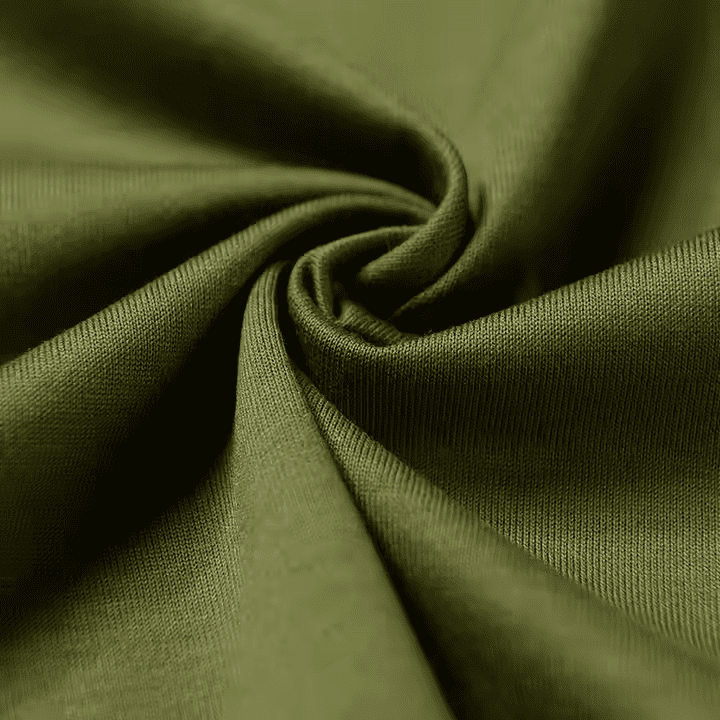
The blend ratio of polyester to spandex plays a critical role not only in fabric performance but also in how the fabric responds to chemical and thermal textile finishing processes. While both 85/15 and 90/10 polyester-spandex fabrics are excellent candidates for disperse dyeing and sublimation printing (thanks to their high polyester content), the higher spandex ratio in 85/15 introduces some unique challenges in heat management, print registration, and finish durability.
Fabric Processing Behavior Table
| Feature | 85/15 Polyester-Spandex | 90/10 Polyester-Spandex |
|---|---|---|
| Dye Uptake (Disperse Dyes) | High | High |
| Heat Sensitivity (Spandex Reaction) | High risk at >200°C | Moderate risk |
| Sublimation Print Clarity | Excellent (with control) | Excellent |
| Color Bleed Resistance | Moderate (needs fixatives) | Stable |
| Brushing/Peaching Finish | Soft handfeel, fluid drape | Crisper structure retained |
| Moisture Management Finishes | Effective | Highly durable |
| Antimicrobial Finish Retention | Moderate | Better (less fiber mobility) |
Dyeing & Heat Setting – Managing Spandex Degradation
Spandex fibers begin to degrade when exposed to dry heat above 200°C, which is a common temperature range for disperse dye fixation or sublimation transfer. In 85/15 blends, the higher spandex volume amplifies this sensitivity. Overheating may lead to:
- Fiber shrinkage
- Yellowing or loss of whiteness in base fabric
- Reduced elasticity and recovery
To prevent this, manufacturers often pre-set the fabric at controlled heat (around 180–190°C) or apply a low-temperature carrier-assisted dye process for improved fixation and stretch preservation.
Technical Tip: Thermogravimetric Analysis (TGA) indicates that the thermal stability threshold for elastane begins to drop sharply beyond 210°C—making 90/10 slightly safer for standard sublimation operations.
Sublimation Printing – Precision & Calibration Required
Both blends perform well with sublimation printing, which is favored for polyester-based fabrics due to its vibrant color rendering and durability. However:
- 85/15 requires tighter control of dwell time, roller pressure, and cooling zones to avoid shrinkage or warping.
- 90/10 allows more tolerance in the heat curve and typically produces sharper results with fewer mechanical issues.
Real-World Yield Comparison:
| Brand | Fabric Used | Initial Reject Rate (Sublimation Defects) | After Calibration |
|---|---|---|---|
| LumeFitwear (Canada) | 85/15 | 12.4% | 1.8% |
| UrbanFit Co. (USA) | 90/10 | 1.7% | 1.3% |
In the above example, ghosting, bleeding, and misregistration were initially common in 85/15 until adjustments in pre-heating and backing paper tension reduced defects significantly.
Chemical Finishes – Functional Retention in Use Cycles
Moisture-Wicking & Anti-Odor Coatings
Both blends respond well to hydrophilic polymer coatings, such as cationic polyesters or crosslinked silanes. However:
- 85/15 has higher elasticity and thus may weaken surface bonding of finishes during repeated stretching.
- 90/10 tends to retain finishes longer due to its more stable structure.
Lab Test: Finish Retention After 30 Washes
| Finish Type | 85/15 Retention | 90/10 Retention |
|---|---|---|
| Moisture-Wicking | 83% | 91% |
| Silver-Based Antimicrobial | 78% | 88% |
This suggests that 90/10 is preferable for garments requiring extended hygiene performance, such as uniforms, medical wear, or socks.
Aesthetic Finishes – Peaching, Brushing, and Sandwashing
These mechanical processes soften the fabric’s surface and are widely used for leggings, loungewear, and intimate apparel.
- 85/15 develops a softer, more luxurious finish with greater drape due to high stretchability.
- 90/10 retains more body and shape post-finishing, giving a more tailored or structured silhouette.
Manufacturer Insight: A brushed 85/15 yoga fabric made by a Vietnamese mill reached 0.43 KPa softness (measured via the Kawabata Evaluation System), while a similar 90/10 brushed knit remained at 0.61 KPa—perceived as slightly firmer.
Case Highlight: Production Adjustment in Digital Sublimation
A Canadian fitness brand initially sourced 85/15 poly-spandex for their digitally sublimated leggings. Early runs showed inconsistent inking and warped leg seams, especially near inseams and stretch zones. By integrating a dual-stage heat calibration (pre-press at 170°C, main transfer at 185°C) and adding silicone anti-slip film stabilizers, reject rates fell from 12% to under 2%, saving $18,000 per production quarter.
Meanwhile, a U.S. urban apparel label using 90/10 maintained 100% print clarity and consistent production without the need for extra stabilization—showcasing how the blend’s structure streamlines mass production.
Final Takeaway:
- 85/15 is perfect for creating ultra-soft, highly stretchable garments but demands careful control of heat and finishing variables to ensure consistent results.
- 90/10 offers ease of processing, high retention of finishes, and excellent print clarity, making it ideal for high-volume, consistent output with minimal variation.
Where to Find and Customize High-Quality 85/15 or 90/10 Polyester-Spandex Fabrics?
Choosing the right supplier for polyester-spandex blends—especially popular ratios like 85/15 and 90/10—is more than just sourcing fabric. It’s about aligning with a manufacturer that offers technical expertise, flexible production, and certified quality that consistently meets your brand’s expectations.
Whether you’re launching a new product line or scaling an established brand, supplier capabilities in customization, compliance, sampling speed, and MOQ policy will directly affect your cost efficiency, market readiness, and long-term buyer confidence.
Fabric Sourcing Matrix: How Do Key Options Compare?
| Factor | SzoneierFabrics | Local Textile Traders | General Trading Companies |
|---|---|---|---|
| Custom GSM Range | Yes (140–360 GSM) | Often stock-only | Often limited |
| MOQ Flexibility | Low (300m or less) | 500–1000m | 1000m+ |
| Sampling Lead Time | 3–7 days | 14–20 days | Up to 25 days |
| Bulk Production Lead Time | 14–20 days | 25–35 days | Varies by subcontractor |
| Certifications | OEKO-TEX®, GRS, SGS, ISO9001 | Rarely available | Case-by-case |
| Custom Finishing | Anti-odor, moisture-wicking, UV-block, anti-pilling | Limited or none | Typically none |
| Print Options | In-house sublimation & rotary | Outsourced | Restricted |
| Quality Assurance | Full in-house QC + lab reports | Visual-only | Vendor-dependent |
| Tech Support | CAD development, R&D team, bilingual QA engineers | No | Minimal |
Why Choose SzoneierFabrics?
With over 18 years of OEM/ODM experience, SzoneierFabrics has become a trusted partner for global brands in activewear, uniforms, shapewear, and fashion basics. Here’s what sets us apart:
- ✔️ Custom Weights & Constructions: Any knit or woven pattern, from 140GSM lightweight performance jersey to 360GSM firm double-knit
- ✔️ Ultra-Low MOQs: As low as 300 meters per color/design, ideal for startups and capsule brands
- ✔️ Advanced Functional Finishing: Options include nano anti-odor, antimicrobial, UV-protective, anti-static, and anti-pilling coatings
- ✔️ Fast Sampling & Scale-Up: Rapid swatch approval in 3–5 days; bulk ready in 14–20 working days
- ✔️ Real Testing, Real Transparency: Every bulk run comes with SGS or internal lab reports, covering colorfastness, shrinkage, and tensile strength
- ✔️ Bilingual R&D Support: CAD tech packs, dye lab simulation, and global logistics coordination provided in English and Chinese
Client Success Story: From Startup to Global Rollout
A UK-based activewear startup approached SzoneierFabrics in early 2023 with a single-sample request for 85/15 poly-spandex in 240 GSM interlock with custom floral sublimation print. Within two weeks, they approved lab dips and completed their first 400m order.
By Q4 that same year:
- They had scaled to 8,000 meters/month
- Partnered with a major EU fitness chain
- Maintained <1% defect rate across all deliveries
- Introduced three new product categories using the same 85/15 base fabric
Feedback from their retail partners highlighted the print vibrancy, stretch recovery, and fabric handfeel as key purchase drivers—helping secure more B2B buyers.
What Should You Look for in a Supplier?
When sourcing performance knits or stretch wovens made with polyester and spandex, vet potential partners on:
- ✅ Raw Material Traceability: Can they prove their yarn source (e.g. Recycled PET)?
- ✅ Finishing Control: Are coatings applied in-house or outsourced (affects consistency)?
- ✅ Printing Capability: Do they offer sublimation-ready pre-treatments or only basic white fabric?
- ✅ Testing & Compliance: Are they OEKO-TEX® certified? Can they meet REACH, CA Prop 65, or EN ISO 105 standards?
- ✅ After-Sales Support: Can they troubleshoot design-to-fabric alignment during your sampling phase?
Final Word: The Right Blend Needs the Right Partner
Your choice between 85/15 vs. 90/10 polyester-spandex is not just about elasticity—it’s about:
- How stretch vs. structure supports your garment design
- How MOQ and speed-to-market affect your brand’s cash flow
- How material feel and finish shape customer reviews and retention
From body-hugging shapewear to corporate casual, having the right fabric partner makes it easier to move from concept to consumer—with fewer risks and higher satisfaction.
Ready to Source Smarter?
SzoneierFabrics is ready to co-develop your fabric solution. Whether you need extra stretch for leggings, minimal shrinkage for polo shirts, or eco-fabrics for modern retail, we’ll help you match the perfect 85/15 or 90/10 blend to your brand’s specs.
📨 Email: info@szoneierleather.com 🌐 Website: www.szoneierleather.com 📞 Phone: (+86) 13823134897
Let’s create your next bestseller—starting from the fiber up.
